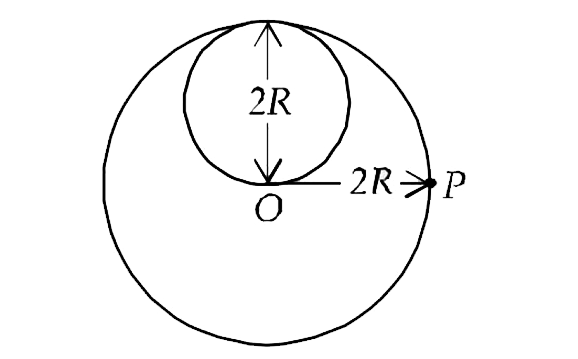Statement I: A tuning fork is considered as a source of an acoustic wave of a single frequency as marked on its body. Statement II: The tuning fork cannot produce any of its harmonics due to its special nature of construction.
Statement I is true, Statement II is true: Statement II is a correct explanation for statement I.
Statement I is true, Statement II is true, Statement II is NOT a correct explanation for Statement I.
Statement I is true, Statement II is false
Statement I is falce: Statement II is true
The correct Answer is:A
The tuning fork does produce harmonics, but the intensities of the harmonics are too weak to be effective, due to its special ditribution of mass and the use of prongs.
Topper's Solved these Questions
- SOUND WAVES AND DOPPLER EFFECTBOOK - CENGAGE PHYSICS ENGLISHCHAPTER - SOUND WAVES AND DOPPLER EFFECTEXERCISE - Comprehension
144 Videos
- SOUND WAVES AND DOPPLER EFFECTBOOK - CENGAGE PHYSICS ENGLISHCHAPTER - SOUND WAVES AND DOPPLER EFFECTEXERCISE - Integer
16 Videos
- SOUND WAVES AND DOPPLER EFFECTBOOK - CENGAGE PHYSICS ENGLISHCHAPTER - SOUND WAVES AND DOPPLER EFFECTEXERCISE - Multiple Correct
44 Videos
- RIGID BODY DYNAMICS 2BOOK - CENGAGE PHYSICS ENGLISHCHAPTER - RIGID BODY DYNAMICS 2EXERCISE - Interger
2 Videos
- SUPERPOSITION AND STANDING WAVESBOOK - CENGAGE PHYSICS ENGLISHCHAPTER - SUPERPOSITION AND STANDING WAVESEXERCISE - Comprehension Type
5 Videos
Similar Questions
A railroad train is travelling at 30ms in still air. The frequency of the note emitted by locomotive whistle is 500 Hz. Speed of sound is 345ms.
Q. What is the frequency of the sound waves heard by a stationary listener in front of the train?
View SolutionThe average power transmitted across a cross section by two sound waves moving in the same direction are equal. The wavelength of two sound waves are in the ratio of 1:2, then find the ratio of their pressure amplitudes.
View SolutionWhich of the following statements are incorrect?
View SolutionA lamina is made by removing a small disc of diameter 2R from a bigger disc of uniform mass density and radius 2R, as shown in the figure. The moment of inertia of this lamina about axes passing though O and P is IOandIP respectively. Both these axes are perpendicular to the plane of the lamina. The ratio IPIO is

View SolutionA string of length L, fixed at its both ends is vibrating in its 1st overtone mode. Consider two elements of the string of the same small length at positions l1=0.2Landl2=0.45L from one end.
If K1andK2 are their respective maximum kinetic energies,then
View SolutionA source of sound with adjustable frequency produces 2. beats per second with a tuning fork when its frequency is either 476 Hz or 480 Hz. What is the frequency of the tuning fork ?
View SolutionStatement I: A tuning fork is considered as a source of an acoustic wave of a single frequency as marked on its body. Statement II: The tuning fork cannot produce any of its harmonics due to its special nature of construction.
View SolutionTwo tuning forks having frequency 256 Hz (A) and 262 Hz (B) tuning fork. A produces some beats per second with unknown tuning fork, same unknown tuning fork produce double beats per second from B tuning fork then the frequency of unknown tuning fork is :-
View SolutionA tuning fork of frequency 100 when sounded together with another tuning fork of unknown frequency produces 2 beats per second. On loading the tuning fork whose frequency is not known and sounded together with a tuning fork of frequency 100 produces one beat, then the frequency of the other tuning fork is
View SolutionWhen a tuning fork vibrates, the waves produced in the fork are
View SolutionA number of tuning forks are arranged in the order of increasing frequencies and any two successive tuning forks produce 4 beats/second, when sounded together. If the frequency of the last tuning fork is the octave of the first tuning fork and if the frequency of the first tuning fork is 256 Hz, then the number of tuning forks is
View SolutionA tuning fork produces 6 beats/sec with sonometer wire when its tensions are either 169N or 196N . The frequency of that fork is
View SolutionA tuning fork produces 4 beats/s with a sonometer wire when its lengths are 50cm , 51cm . The frequency of that tuning fork is
View SolutionA tuning fork of frequency 100 when sounded together with another tuning fork of unknown frequency produces 2 beats per sec . On loading the second tuning fork , sounded together with first tuning fork , produces one beat , then the frequency of the second tuning fork is
View SolutionIf the prong of a tuning fork is filed, its frequency………………and if it loaded with wax, its frequency……………………
View SolutionA source of sound with adjustable frequency produces 2. beats per second with a tuning fork when its frequency is either 476 Hz or 480 Hz. What is the frequency of the tuning fork ?
View Solution
